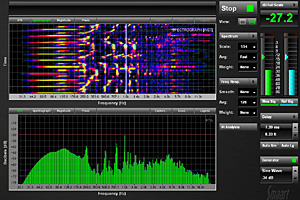
Reply posted by Chip on September 18, 2001
Patrik, If I understand the electronics correctly, the phase adjustment in the DSP simply “rolls” the phase without adjusting time. If I’m correct, changing the phase would not change the result of an impulse time measurement. To the best I can understand it, at this point, the differentiating factor between the requirement for a phase adjustment VS. a time adjustment would be the phase angle relationship AT the crossover frequency. If the angles are not parallel, some time adjustment is required.
Once the phase angles are parallel, if necessary, you can adjust the phase to make the phase angles lay one on top of the other while remaining parallel. If you were to continue to adjust the time, you would loose the coherance of the phase angles and have a less phase coherant area above, and below, the crossover point.
Reply posted by David Gunness on September 18, 2001
Everything you’ve said is true – so I think you’ve got it. Let’s see if I can clarify it. If the arrival times are the same, the phase response curves will be parallel. If the two signal paths are “in phase” at crossover, the phase response curves will have the same value at the crossover frequency. The ideal situation is for both of these conditions to be true, but occasionally you can’t achieve both by only adjusting delay.
Reply posted by Chip on September 18, 2001
David, This is exactly what I was getting at. You were able to deliver it in a much more understandable way than I was. Can you think of any other way to differentiate between the two?
Reply posted by David Gunness on September 18, 2001
Delay always produces phase shift, but the phase response can be shifted without producing delay.
